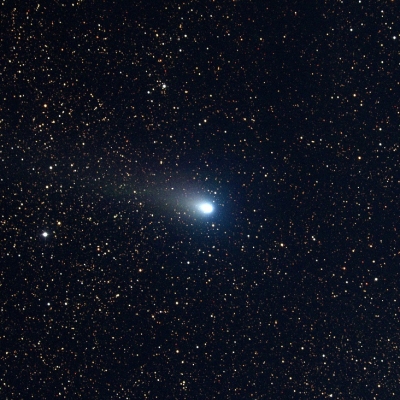
Discovered first on December 20, 1900, comet 21P/Giacobini-Zinner gets its name from two astronomers. From being one of the last comets to be discovered in the 19th Century, this comet is now best known for having the first encounter with a spacecraft.
Comets are popular for different reasons. There’s Halley’s comet, which is the most famous of them all. Regularly visible to the naked eye from the Earth, Halley’s comet has been observed and recorded by astronomers for over 2,000 years. Then, there is comet Hyakutake. Discovered only in 1996, this comet’s passage near the Earth in the same year was one of the closest cometary approaches in nearly 200 years. We will be turning our attention to comet 21P/Giacobini-Zinner, whose claim to fame now includes being the first comet to encounter a spacecraft. This comet was first discovered on December 20, 1900, making it one of the last comets to be discovered in the 19th Century. A discoverer of a number of comets, French astronomer Michel Giacobini found this comet while skygazing from Nice Observatory. It was followed for two months and orbital calculations revealed that the comet was a periodic object with an orbital period less than seven years.
Recovered in 1913
It wasn’t recovered in 1907, when it was not placed favourably for viewing. Even though the comet was expected to be unfavourably placed in 1914 as well, German astronomer and renowned science historian Ernst Zinner accidentally rediscovered it on October 23, 1913.
Since both Giacobini and Zinner discovered and recovered this comet, it is named after them and is called comet 21P/Giacobini-Zinner. The letter “p” indicates that it is a periodic comet, which are comets with orbital periods less than 200 years. When orbital calculations were revised when the comet was recovered in 1913, its orbital period was found to be close to 6.6 years, and the comet has been observed on almost every return since then.
Draconid meteor shower
This comet had favourable returns in 1959, 1985, and 2018, when it was well observed as its perihelion (closest approach to sun) allowed it to pass close to the Earth. The nucleus of the Giacobini-Zinner sprays ice and rock into space every time it returns to the inner solar system. This makes the comet the parent comet of the Draconid meteor shower, which takes place in early October each year.
While this meteor shower is quite weak in most years, there have been Draconic meteor storms on record, meaning that over 1,000 meteors were seen per hour at the location of the observer. The 1933 and 1946 Draconid storms were particularly intense, with over 500 meteors observed per minute in Europe during the former and 50-100 per minute seen in the U.S. during the latter.
Farquhar’s idea
Comet Giacobini-Zinner’s current claim to fame was a result of its favourable return in 1985. When funding for a spacecraft mission to comet 1P/Halley, which was enroute to its 1986 perihelion passage, didn’t materialise, planetary scientist Robert Farquhar came up with an idea. He suggested that the already existing International Sun-Earth Explorer 3 (ISEE-3) be placed on an alternate path that would take it towards Giacobini-Zinner.
Once the idea was approved, ISEE-3 was sent on a series of lunar flybys that would take it towards Giacobini-Zinner. Following the final lunar flyby in December 1983, ISEE-3 was renamed the International Cometary Explorer (ICE).
On September 11, 1985, ICE passed through the ion tail of Giacobini-Zinner, thereby completing the first encounter between a comet and a spacecraft. While ICE lacked cameras, it did carry scientific instruments that enabled it to record measurements of the electric environment around the comet and also as to how the comet interacted with the solar wind.
Even though an international fleet of spacecraft, including ICE, met Halley in 1986 from a number of vantage points for a study like never before, Giacobini-Zinner will forever hold the title of being the first comet to encounter a spacecraft. While its most recent return in 2018 might be comet 21P’s most favourable return in the 21st Century, you can still look forward to its approach once in less than seven years, and maybe even try and track it.
Picture Credit : Google




